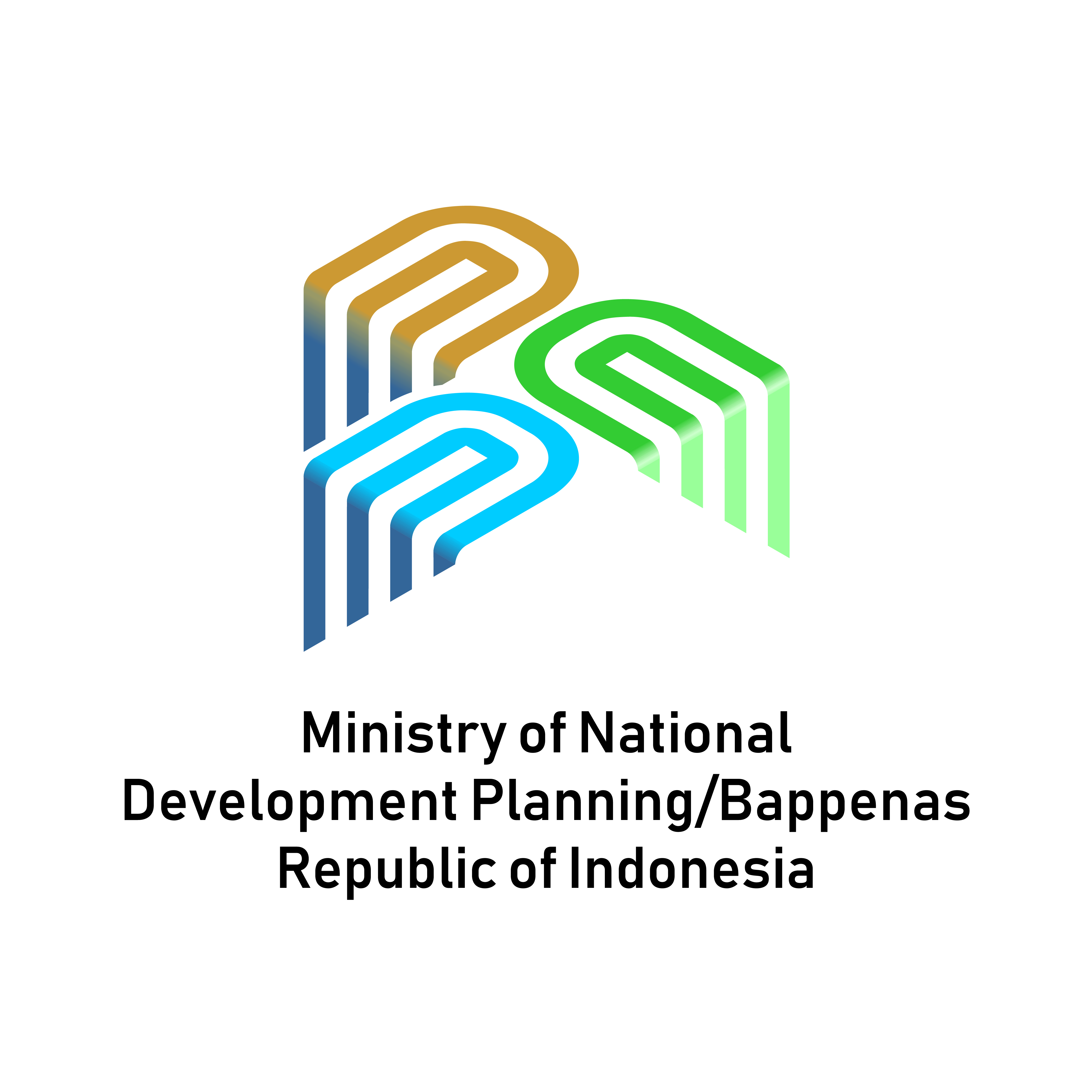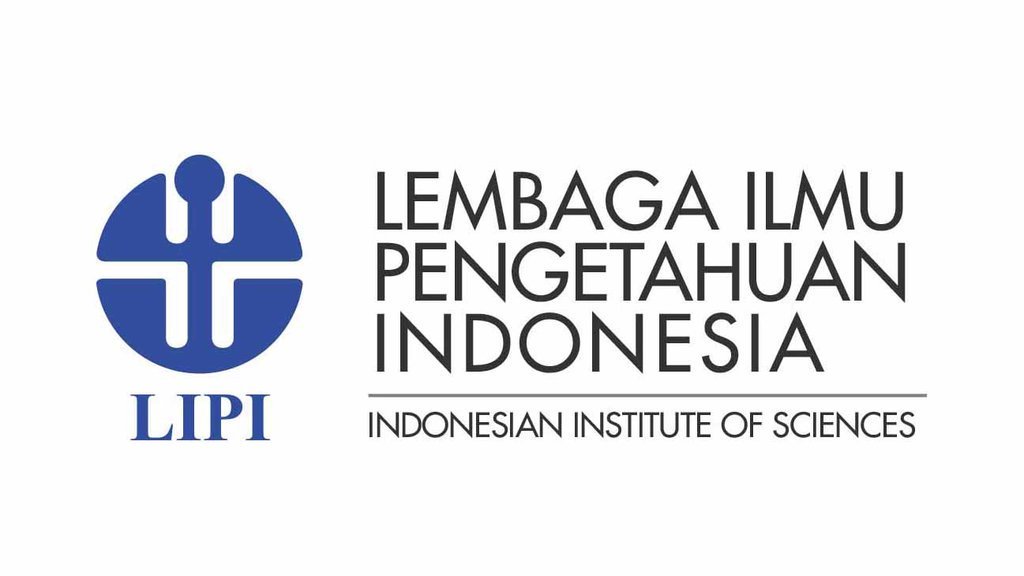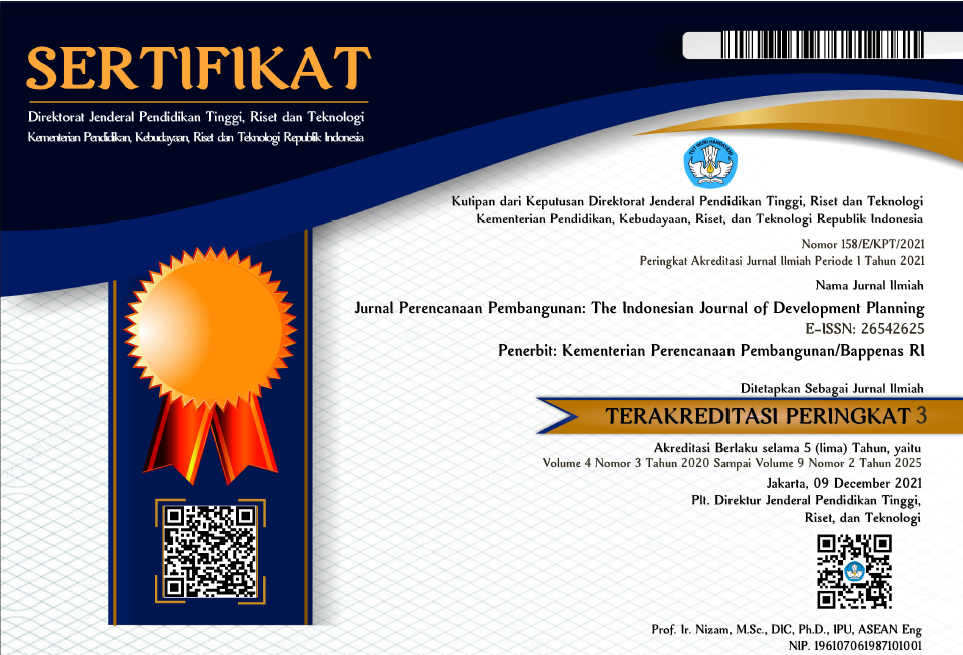Regional Disparities in North Kalimantan: A Decade after Territorial Split
DOI:
https://doi.org/10.36574/jpp.v8i3.607Keywords:
Regional Disparities, Territorial Split, North KalimantanAbstract
Territorial split is one of the Government of Indonesia’s strategies to address regional disparities and promote equitable development along with effective government administration nationwide. Various studies on the impact of territorial splits in the new autonomous regions have indicated that these measures have achieved limited success, particularly during the initial period following the implementation of the Regional Autonomy policy in the early 2000s. North Kalimantan, which was established in 2012 as one of Indonesia's youngest provinces, may present different outcomes compared to other autonomous regions formed during the early stages of these policies. This study aims to analyze the economic development and regional disparities indicators in North Kalimantan before and after the 2012 territorial split. This research utilizes data from the Central Bureau of Statistics of the Republic of Indonesia, including national, provincial, and regency/city levels, aiming to analyze economic development trends from pre- to post-slit 2012, as measured by Gross Regional Domestic Product (GRDP), GRDP per capita, Gini Index, Williamson Index, and Klassen Typology. The findings show that economic development indicators in North Kalimantan have improved following the territorial split. Regional disparities indicators such as the Williamson Index and Klassen Typology Analysis also show an improved situation in North Kalimantan post-split, making it one of the regions that has successfully grown and thrived well after the territorial split. The strong economic potential of North Kalimantan before the territorial split may have played a role in maintaining its economy in the post-split period.
Downloads
References
Dunford, M. (2020). Regional Inequalities. In International Encyclopedia of Geography (pp. 1–20). Wiley. https://doi.org/10.1002/9781118786352.wbieg0632.pub2
Elpisah, E., Suarlin, S., & Yahya, M. (2021). Klassen Typology and Williamson Index to Measure Macroeconomics in South Sulawesi Province. Golden Ratio of Social Science and Education, 1(1), 37–49. https://doi.org/10.52970/grsse.v1i1.109
Faoziyah, U., & Salim, W. A. (2016). Proliferation Pattern in Underdeveloped Region: Is it the Real Solution to Solve Underdeveloped Region’s Problem in Decentralized Indonesia? Procedia - Social and Behavioral Sciences, 227, 824–832. https://doi.org/10.1016/j.sbspro.2016.06.151
Farris, F. A. (2010). The Gini Index and Measures of Inequality. The American Mathematical Monthly, 117(10), 851. https://doi.org/10.4169/000298910x523344
Fatimah, & Setyono, J. S. (2020). Territorial split and regional development in West Sulawesi Province: The case of Majene District. IOP Conference Series: Earth and Environmental Science, 485(1), 012086. https://doi.org/10.1088/1755-1315/485/1/012086
Firman, T. (2013). Territorial Splits (Pemekaran Daerah) in Decentralising Indonesia, 2000–2012: Local Development Drivers or Hindrance? Space and Polity, 17(2), 180–196. https://doi.org/10.1080/13562576.2013.820373
Harmadi, S. H. B., & Adji, A. (2020). Regional Inequality in Indonesia: Pre and Post Regional Autonomy Analysis.
Hill, H., & Vidyattama, Y. (2016). Regional Development Dynamics in Indonesia Before and After The “Big Bang” Decentralization. The Singapore Economic Review, 61(02), 1640027. https://doi.org/10.1142/S0217590816400270
Imron, M. A. (2011). Regional Autonomy Proliferation of Region and Pseudo Local Government in Indonesia. Jurnal Kawistara, 1(2). https://doi.org/10.22146/kawistara.3917
Lewis, B. D. (2017). Does local government proliferation improve public service delivery? Evidence from Indonesia. Journal of Urban Affairs, 39(8), 1047–1065. https://doi.org/10.1080/07352166.2017.1323544
Maulana, A. (2019). Faktor-Faktor Pembentukan Daerah Otonomi Baru dan Dampaknya terhadap Keuangan Negara. NATAPRAJA, 7(2), 169–186. https://doi.org/10.21831/jnp.v7i2.25606
Muzani, Y., & Benardin. (2019). Konvergensi Pertumbuhan Ekonomi di Provinsi Bengkulu. Convergence: The Journal of Economic Development, 13–25.
Pierskalla, J. H. (2016). Splitting the Difference? The Politics of District Creation in Indonesia. Comparative Politics, 48(2), 249–268. https://doi.org/10.5129/001041516817037754
Putri, N. D. K., & Wulandari, D. K. A. (2022). Determinant Analysis of Income Inequality in Indonesia 2015 - 2020. Indonesian Journal of Human Resource Management, 1(1).
Sugiyono. (2012). Metode Penelitian Kuantitatif dan Kualitatif. ALFABETA.
Talitha, T., Firman, T., & Hudalah, D. (2020). Welcoming two decades of decentralization in Indonesia: a regional development perspective. Territory, Politics, Governance, 8(5), 690–708. https://doi.org/10.1080/21622671.2019.1601595
Tarigan, A. (2010). Dampak Pemekaran Wilayah. Perencanaan Pembangunan, 22–26.
Tryatmoko, M. W. (2014). Menata Ulang Kebijakan Pemekaran Daerah di Indonesia. Masyarakat Indonesia, 40(2), 191–209.
Downloads
Published
How to Cite
Issue
Section
License
Copyright (c) 2024 Jurnal Perencanaan Pembangunan: The Indonesian Journal of Development Planning

This work is licensed under a Creative Commons Attribution-NonCommercial-ShareAlike 4.0 International License.
This is an open-access article distributed under the terms of the Creative Commons Attribution-NonCommercial-ShareAlike 4.0 International License. Copyright © Kementerian PPN/Bappenas RI

















